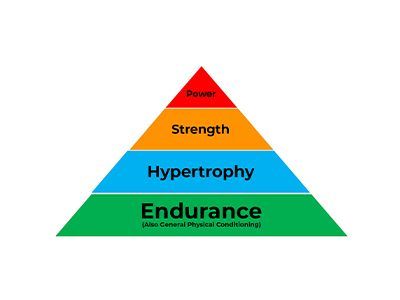Maximising Your Workout Potential: The Importance of Functional Warm-Ups
Embarking on a workout or playing a sport without a proper warm-up is like starting a car in sub-zero temperatures without letting the engine warm-up first. In the realm of fitness, a functional warm-up is the key to unlocking your body's potential, enhancing performance, and reducing the risk of injury. In this blog post, we delve into the significance of functional warm-ups, focusing on their role in preparing the body for the specific demands of different exercises and activities.
Understanding 'Functional'
Before we delve into the intricacies of functional warm-ups, let's clarify the term 'functional.' In this context, functional refers to the integration of all relevant planes of motion (sagittal, frontal, transverse), lines of movement, and joint actions likely to be involved in the upcoming fitness program or activity. It's about mimicking the motions and intensities of the exercise to optimise your body's readiness.
Tailoring the Warm-Up to the Activity
One of the cardinal principles of an effective warm-up is tailoring it to the specific demands of the impending activity. For instance, a running warm-up should focus on preparing the ankle, knee, and hip joints along with associated muscles for the dynamic nature of running. Similarly, a resistance training warm-up for a full-body workout should engage all joints and muscle groups, approaching the anticipated intensity of the weights to be lifted. This approach ensures that your body is primed for the challenges it's about to face.
Gradual Intensity Increase
A functional warm-up isn't about jumping straight into high-intensity exercises. Instead, it should be a gradual process that aligns with the anticipated intensity of the upcoming session. Using the Rate of Perceived Exertion (RPE) scale, a functional warm-up typically starts at an RPE of 4 and progresses to 6 or 7 out of 10. This gradual intensity increase allows your body to adapt, increasing blood flow, heart rate, and activating the nervous system in preparation for more demanding exercises.
Benefits of a Thorough Warm-Up
A functional warm-up primes your body for the demands of the workout by increasing heart rate, ventilation rate, muscle temperature, nervous system activation, and joint range of motion. These physiological responses create an optimal environment for your body to perform at its best.
Dynamic Stretches Over Static Ones
In the realm of functional warm-ups, dynamic stretches take precedence over static stretches. Unlike static stretches that involve holding a position for an extended period, dynamic stretches involve continuous, controlled movements that mimic the actions of the upcoming activity. Dynamic stretches activate the skeletal nervous system, enhancing coordination and flexibility, while static stretches, if performed alone, may compromise muscle power and responsiveness.
Take Home Message
The importance of a functional warm-up cannot be overstated in any fitness program. Tailoring the warm-up to the specific demands of the activity, gradually increasing intensity, and incorporating dynamic stretches are crucial steps to prepare your body effectively. By engaging in a thorough warm-up, you not only reduce the risk of injury but also optimise your performance, ensuring that you get the most out of every workout. So, before you dive into your next exercise session, take the time to warm-up functionally—your body will thank you for it.
Share this blog
Read more from Academy of Fitness and High Performance











